«A place where you hide from the wolves. That’s all any room is.»
Jean Rhys
I’ve written a few postings on reading setups, e.g. Comfortable Reading Position and There (likely) is no single best reading position. Recently I got a question to the former posting, whether I would change anything, well, whether I would suggest he should change anything regarding his build. And which chair to buy.
Not an easy question, looking back on this build:
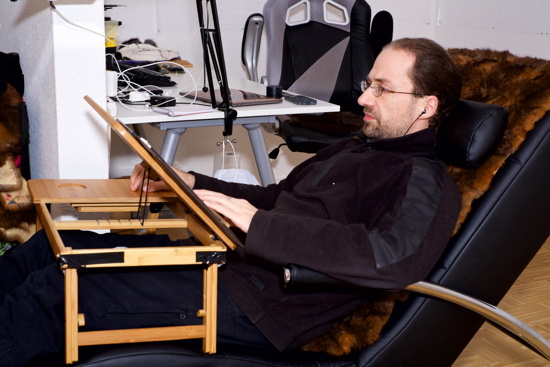
I did do a few changes:
I changed the reading table, making it more sturdy by adding a few screws and pieces of wood (can’t really see it on the photos), and put the bar on which you rest the book/iPad a bit higher and too the right:
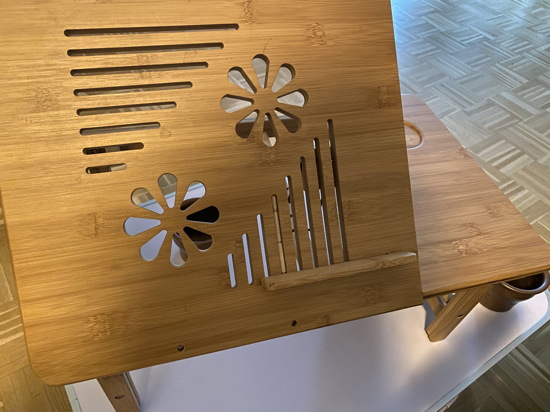
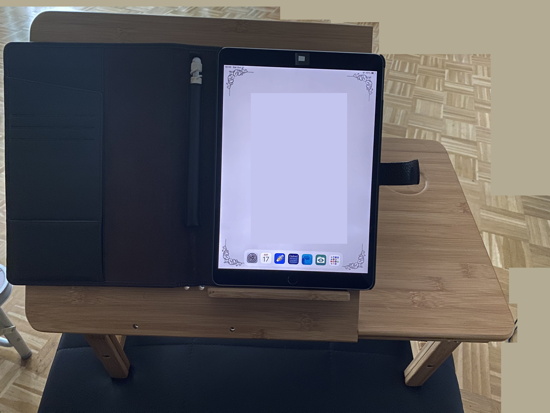
I use two short shelves and a cushion that was originally to stand on while working with a standing desk (for which I also use it) to rest my feet.
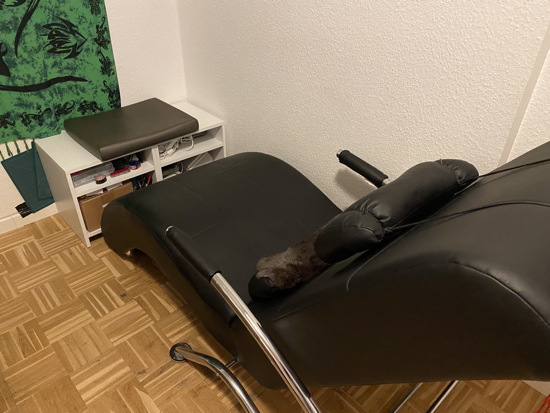
I reactivated a small pillow to sit more comfortably (I mean the lower one here, the one with the rabbit fur put over it). It does wonders for my lower back.
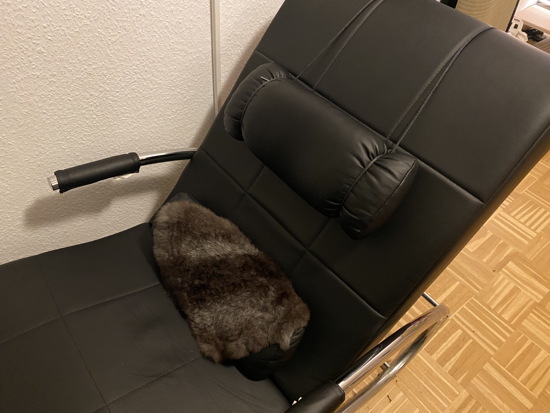
Something that I did ages ago, but I made sure the other pillow, the one for the neck, doesn’t fall down when I move my body. Just tying a bivouac sack to it (using very long shoelaces):
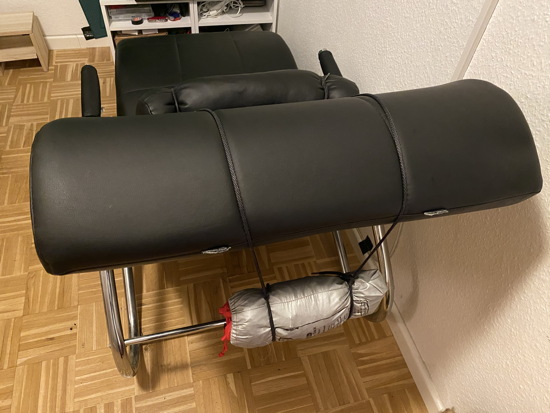
I also exchanged the larger iPad Pro (10.5″) with a smaller iPad 5 mini. Allows me to read without a table and hold the device in one hand (and a great size for reading digitized paperback novels … aehm, fiction eBooks).
So, what would I look for if I would create it again?
- A sturdy but light reading table that is shorter than the width of the chair, yet a bit wider than your waist (consider that you might wear thicker clothes or a blanket in winter). Hard to find, I am satisfied with my reading table, but only after going over and through it with a drill, screws, nails, and wood.
- A comfortable reading chair with a leg rest that is at least as high as your waist. The one I have goes down at the end, which — at least for me — is very uncomfortable. Thus the added foot rest. It’s probably something to try out in a store. I bought mine untested and was semi-lucky.
- A cushion for the lower back. Trust me on this, it works wonders.
- A cushion for the neck. Same reason.
- A reading device you can hold with one hand. I would also strongly suggest something you can easily take notes on, including highlight text. One of the reasons why I never really liked my Kindle Voyage. Text might be nice on the eyes, but way too slow (Skim a book? Forget it!), no colors (some books do have illustrations, not to mention comics … aehm, “graphic novels”), and no quick and easy way to highlight text and make notes. The iPad 5 mini with GoodReader (combined with a way to get texts as PDFs) is my preferred option here.
- Other reading places. Yep. I don’t think there is one single best reading position. We are not made to sit still for hours and hours, but have to move at least every few hours. So have other places in which you can read. E.g., lying on the bed, or even lying on the bed on the back (again, digital reading rules, if you combine and iPad with a monitor arm — compared with reading one of the later Harry Potter novels (my arms, my arms) … priceless).
- Good books (or other texts). It took me a while, but while I do have a lot of books that I bought with the intention of reading, I don’t mind not reading them. Sometimes, you can’t get into a book because the style of the author does not agree with you. Or the subject matter turned out to be less interesting, or more trivial. This applies to fiction (“classics”, although they are usually much, much better than their reputation as something people only wanted to have read) and non-fiction alike. Sometimes skimming is enough. Then again, sometimes you have a look on the first page of a book, let’s say in the morning while sitting on the toilet, and despite having a lot to do you end up spending most of the day burning through a 400+ pages book (mostly sitting in the reading chair). A good place to read is only one of the aspects that makes reading … worthwhile. 🙂
And above all, just watch yourself — listen to your body, check how much you read, and adapt. It’s less finding the perfect setup (won’t work, you will change, your situation will change), but creating a space in which you can lose yourself into a book … and take something out of it.